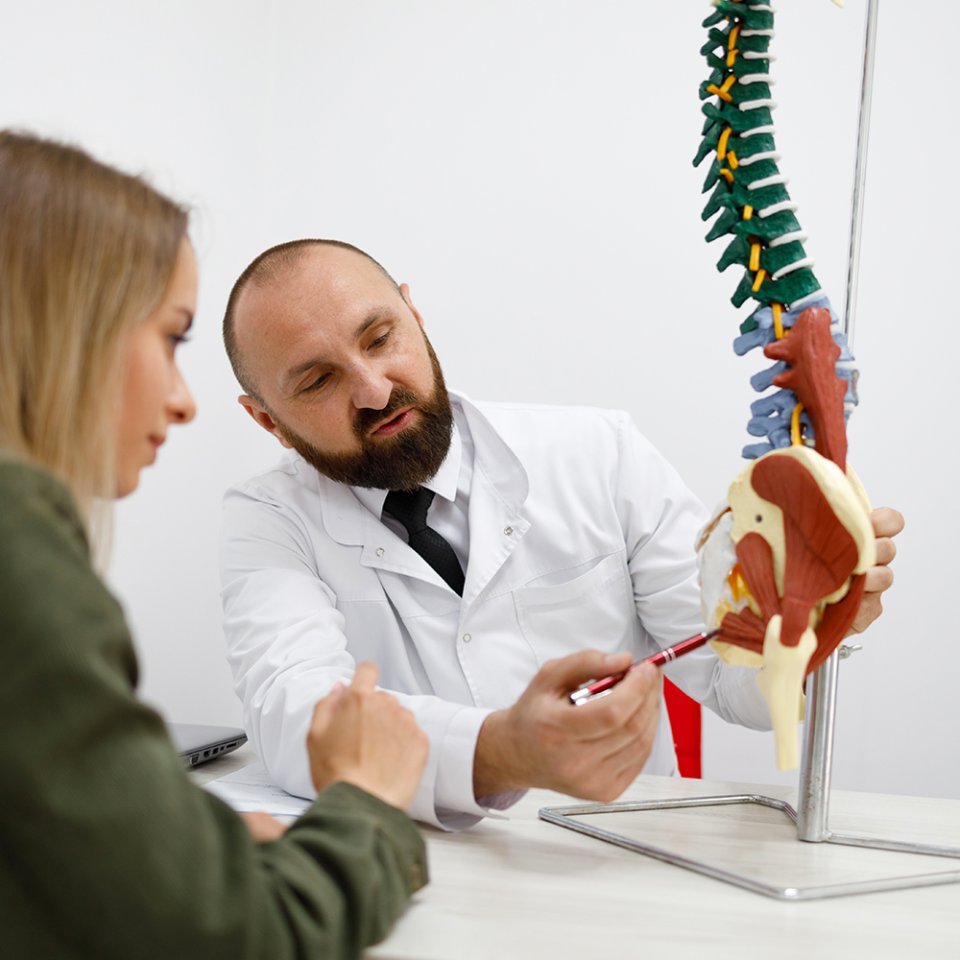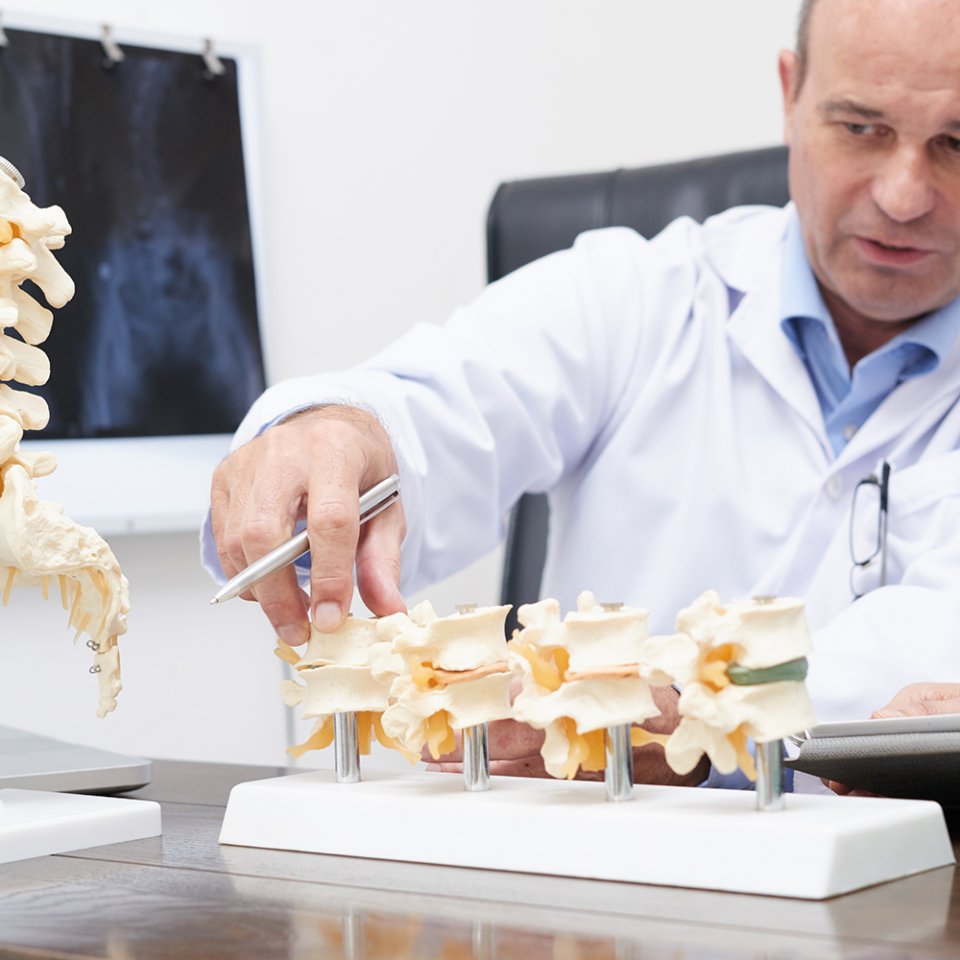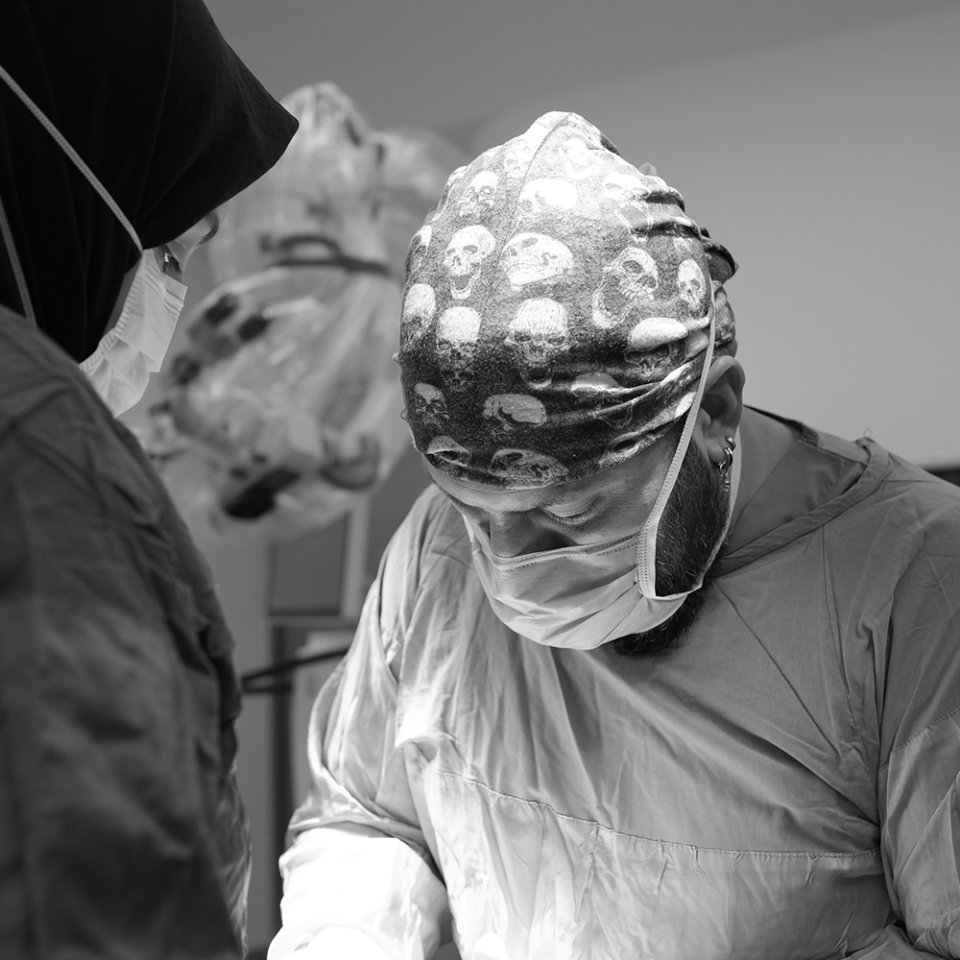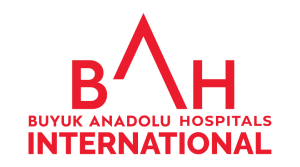What is Spine Surgery?
Spine surgery involves a range of procedures designed to relieve nerve compression, stabilize unstable segments, and correct spinal deformities. The most common conditions treated are herniated discs (cervical or lumbar), spinal stenosis, spondylolisthesis, scoliosis, and kyphosis. The goal is to reduce pain, protect nerve function, and restore mobility.
Types of Spine Surgery
At Büyük Anadolu Hospitals, we provide comprehensive spine treatments, including:
Microdiscectomy / Endoscopic Discectomy
Removing herniated disc material pressing on nerves (cervical & lumbar).
Decompression (Laminotomy / Laminectomy, Foraminotomy)
Relieving pressure from spinal stenosis by creating more space for the nerves.
Spinal Fusion (PLIF, TLIF, ALIF, XLIF)
Stabilizing the spine with screws, rods, and bone grafts.
Deformity Correction
Surgical correction of scoliosis and kyphosis with instrumentation.
Artificial Disc Replacement
Preserving motion with advanced prosthetic implants in selected patients.
Minimally Invasive Spine Surgery (MISS)
Smaller incisions, less pain, and faster recovery.

Who is a Suitable Candidate?
You may be a candidate for spine surgery if you have:
-
Persistent neck, back, or leg pain (sciatica) that does not improve with conservative treatment
-
Numbness, tingling, or muscle weakness due to nerve compression
-
MRI/CT findings showing herniated disc, spinal stenosis, or instability
-
Severe deformity (scoliosis/kyphosis) or unstable spinal fractures
-
No improvement after medications, physiotherapy, or injections
How is Spine Surgery Performed?
Anesthesia: General anesthesia
Techniques: Microscopic, endoscopic, or minimally invasive approaches when possible; open surgery if necessary
Duration: 45–120 minutes for microdiscectomy, 2–4 hours for fusion or deformity correction
Hospital Stay: 1 night for microdiscectomy, 3–5 nights for fusion and deformity cases
Mobilization: Patients are encouraged to walk early with personalized rehabilitation programs.


Recovery & Aftercare
Microdiscectomy: Return to daily activities in 1–2 weeks, sports in 6–8 weeks.
Fusion / Deformity Correction: Office work in 4–6 weeks, full recovery in 3–6 months (bone fusion takes up to 12 months).
Rehabilitation: Structured physiotherapy focusing on core strength and posture.
Lifestyle: Weight management, smoking cessation, ergonomics, and regular exercise for long-term success.
Possible Risks & Our Preventive Measures
| Possible Risks | Our Preventive Measures |
|---|---|
| Infection | Advanced sterilization, laminar flow operating rooms, preventive antibiotics |
| Nerve injury or neurological deficit | Intraoperative neuromonitoring (IONM) and microsurgical techniques |
| Dural tear or cerebrospinal fluid leak | Careful dissection, immediate repair, and drainage management |
| Blood clots (DVT/PE) | Early mobilization, compression stockings, and anticoagulant medication if necessary |
| Non-union (pseudarthrosis) after fusion | Use of bone grafts, biologics, and careful implant selection |
| Adjacent segment degeneration | Motion-preserving options (artificial disc replacement when suitable) |
Why You Should Choose Büyük Anadolu Hospitals for Spine Surgery
Expert Spine Surgeons: Our team includes highly experienced orthopedic and neurosurgical specialists, such as Assist. Prof. Dr. Murat Aydın, with international expertise in advanced spine surgery.
Cutting-Edge Technology: Equipped with microscopic and endoscopic systems, intraoperative neuromonitoring (IONM), 3D imaging, and modern implants.
Minimally Invasive Focus: Smaller incisions, less blood loss, reduced pain, and shorter hospital stays.
Comprehensive Rehabilitation: Personalized physiotherapy and long-term follow-up for lasting results.
International Patient Support: End-to-end assistance including visa guidance, airport transfers, translation services, and accommodation arrangements.

Spine Surgery FAQ
No. Most patients improve with conservative treatments. Surgery is recommended only when there is persistent pain, weakness, or neurological symptoms.
Many disc herniations and stenosis cases can be treated minimally invasively. Complex deformities may require combined or open approaches.
After microdiscectomy, many patients return within 1–2 weeks. After spinal fusion or deformity correction, most return to office work within 4–6 weeks.
The goal is to reduce pain and restore function. With proper planning and rehabilitation, most patients return to normal daily activities.
